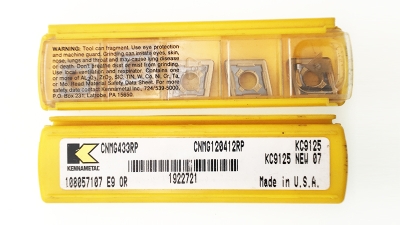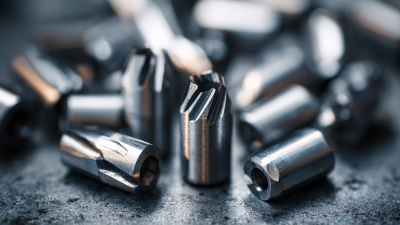7 Best Tips to Maximize the Efficiency of Carbide Tool Inserts
Table of Contents
- Understanding Carbide Tool Inserts: Key Characteristics for Enhanced Performance
- Evaluating Tool Geometry: How Angle and Shape Impact Cutting Efficiency
- Material Selection: Choosing the Right Carbide for Specific Applications
- Optimizing Cutting Parameters: Speed and Feed Rates for Maximum Output
- Maintenance Best Practices: Extending Tool Life through Care and Monitoring
- Advanced Coatings: Leveraging Technology to Improve Tool Insert Durability
- Enhancing Machining Efficiency: Insights from Recent Industry Reports on Kennametal's CNMG120412-RP KC9125 Carbide Inserts
- FAQS
- Conclusion
- Related Posts
You know, Carbide Tool Inserts have really changed the game in the machining world. They've made cutting smoother and tools last way longer—big wins for manufacturers. I came across a recent report from MarketsandMarkets that predicts the global market for carbide tooling will hit around $17.5 billion by 2026. That’s mostly because everyone is craving more precision and pushing towards automation. Here in China, Jinan Terry CNC Tool Limited Company is pretty much a go-to when it comes to exporting CNC cutting tools. They totally get how important it is for manufacturers to squeeze the most out of their carbide inserts. By following some solid best practices, companies can cut down on costs without sacrificing quality. In this blog, I’m gonna share seven handy tips to help boost the efficiency of your carbide tool inserts. Trust me, these tips could really give your operations a nice boost and help you stay competitive out there.
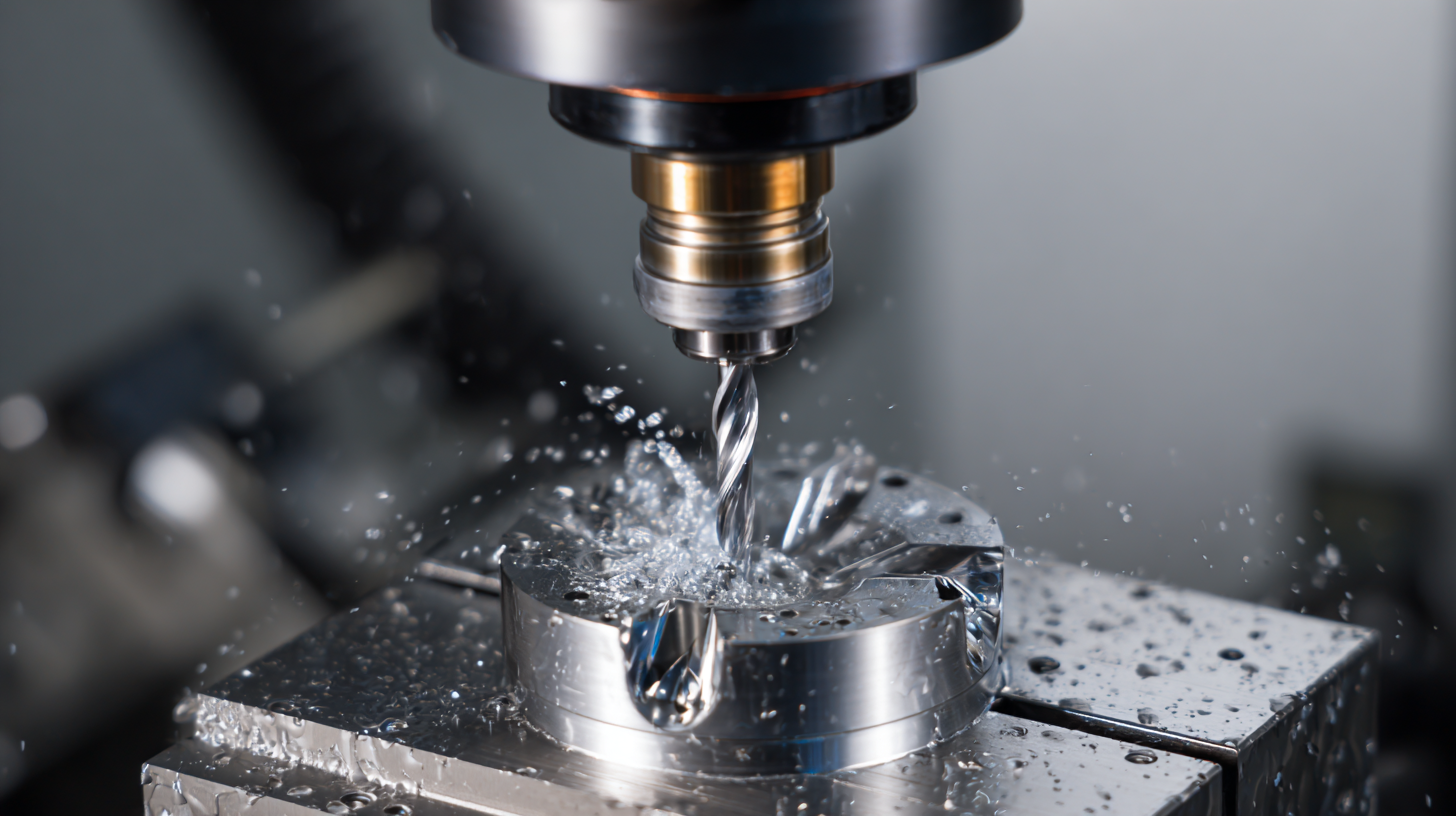
Understanding Carbide Tool Inserts: Key Characteristics for Enhanced Performance
Carbide tool inserts are really a cornerstone when it comes to precision machining. They’re known for their incredible hardness and wear resistance, which can seriously boost how efficiently things run. If you wanna get the most out of these inserts, it’s pretty important to understand their key features. I came across a recent report from Technavio that said the global market for carbide tools might hit around $13.72 billion by 2025 — mostly because industries are on the lookout for tougher, more efficient cutting tools these days. What's cool is that their high thermal conductivity and ability to resist deformation under high pressure make carbide inserts perfect for all sorts of jobs, from automotive manufacturing to aerospace projects.
Here at Jinan Terry CNC Tool Limited Company, we totally get how vital these attributes are for making machining faster and better. Picking the right grade, shape, and coating can make a huge difference in how quickly you can cut and how long your tools last. For example, a smart choice of PVD coating can cut down on friction, which means your tools perform better and don’t need replacing as often. Plus, tech improvements in coatings have made them more heat-resistant, so carbide inserts can handle tougher, more demanding tasks without breaking a sweat. If you pay attention to these key features, you can not only make your tools last longer but also ramp up your overall productivity — it’s a win-win all around.
7 Best Tips to Maximize the Efficiency of Carbide Tool Inserts
Evaluating Tool Geometry: How Angle and Shape Impact Cutting Efficiency
If you’re looking to get the most out of your carbide tool inserts, paying attention to their geometry is a game-changer. Honestly, the shape and angles of the tool can really affect how smoothly your cuts go, the finish you get on the surface, and even your overall production costs. I read somewhere that, according to the Metal Cutting Institute, tweaking tool geometry can cut down the cutting force by up to 25%. That’s huge because it means your tools last longer and perform better.
One tip I can’t stress enough is choosing the right rake angle. For example, a positive rake angle can make a noticeable difference by reducing the force needed during cutting, which results in smoother cuts and less wear and tear on your tools. This is especially handy when working with tougher materials, as a good geometry helps with chip removal and keeps thermal buildup in check. Also, curved cutting edges tend to flow better, making the process smoother and easier to handle.
Another thing to think about is using different shapes for different jobs. For softer materials, sharper edges work best, while rounded edges are better when you need less deformation of the chips. Basically, if you adjust the tool’s geometry depending on what you’re working on, you can really boost efficiency and make your carbide inserts last longer — definitely worth the effort for the savings and performance gains.
7 Best Tips to Maximize the Efficiency of Carbide Tool Inserts
| Tip | Description | Impact on Efficiency | Recommended Angle |
|---|---|---|---|
| Optimize Cutting Edge Angle | Select the appropriate cutting edge angle based on material type. | Reduces cutting force and extends tool life. | 5° - 15° for soft materials, 15° - 30° for hard materials. |
| Choose Correct Tool Shape | Different tool shapes work better for specific applications. | Enhances control and accuracy in cutting. | Round tips for finishing, square for roughing. |
| Maintain Tool Insert Alignment | Ensure tool inserts are properly aligned to prevent excessive wear. | Improves stability and consistency in machining. | N/A |
| Implement Proper Cutting Speeds | Adjust cutting speeds according to material and tool specifications. | Maximizes tool performance and minimizes overheating. | Typical speeds range from 50 to 300 m/min. |
| Regular Tool Inspection | Conduct regular inspections to detect wear or damage early. | Prevents unexpected failures and maintains quality. | N/A |
| Optimize Coolant Usage | Utilize coolant effectively to reduce temperature at the cutting edge. | Enhances tool life and chip removal efficiency. | Use flood coolant or mist for best results. |
| Select Appropriate Material for Inserts | Choose insert materials based on application requirements. | Improves performance and reduces wear rates. | Carbide for steel, ceramic for hard materials. |
Material Selection: Choosing the Right Carbide for Specific Applications
When you're choosing carbide tool inserts for a specific job, the material you pick really makes all the difference in getting the most out of your tools and making them last longer. I recently read a report from the International Journal of Advanced Manufacturing Technology which mentioned that the hardness and wear resistance of carbide can boost productivity by up to 30% in machining processes. Picking carbide grades with the right amount of cobalt can also give you better toughness, especially useful when you're working at high speeds on tougher materials.
Now, to pick the right carbide for what you're doing, think about the cutting conditions. For example, using finer-grained carbides tends to work better for high-speed jobs, while coarser grains might be more suited for roughing or heavier cuts. Here's a little tip: always match your carbide grade to the material you're cutting—this simple step can really improve your efficiency.
Also, don’t forget to pay attention to the shape and design of the inserts. The right rake angle, for instance, can cut down on forces and help with chip removal. A little bonus tip: investing in inserts with advanced geometries designed for your specific machining tasks can really extend tool life and give you a better surface finish. Basically, understanding the ins and outs of material selection and insert design can help you make smarter choices, which ultimately leads to better efficiency and productivity in your work.
Optimizing Cutting Parameters: Speed and Feed Rates for Maximum Output
When you're trying to get the most out of your carbide tool inserts, it’s pretty important to get a good handle on your cutting parameters— things like speed and feed rates really matter. A solid tip I’d give is to find that sweet spot between how fast you’re cutting and how much material you're feeding in. Cranking up the speed can boost your productivity for sure, but if you don’t adjust the feed rate accordingly, it might end up wearing out your tools way too quick. Honestly, it’s all about testing different setups to figure out what works best for your specific machining job—there’s no one-size-fits-all here.
Another thing to keep an eye on is your cutting conditions. Playing around with coolant flow and watching how the chips form can give you a lot of clues about whether your setup is on point. If your chips are too short, chances are your feed rate’s a bit low; if they’re super long, maybe it’s too high. By tweaking these little things regularly, you can make sure your carbide tools are running at their best—saving you time, money, and headaches.
At Jinan Terry CNC Tool Limited, we’re pretty proud of our role in exporting top-notch CNC cutting tools from China. We’ve got the know-how to help our clients pick the right tools and settings, so they can get the most out of their machining and, ultimately, boost their profits.
Maintenance Best Practices: Extending Tool Life through Care and Monitoring
Taking good care of your carbide tool inserts really matters if you want them to last longer and keep your machining running smoothly. Regular check-ups and proper maintenance can actually save you quite a bit on tooling costs in the long run. I read in a report by the Manufacturing Technology Association that tools which are maintained consistently tend to last up to 30% longer than those neglected — which is a pretty big deal when it comes to boosting productivity and profits.
A key thing to do is to inspect your tools often for any signs of wear, like chipping or dullness. If you catch these early, performance won't take a nosedive. Also, using the right coolant can make a big difference—helping to cut down friction and keep temperatures down, both of which can seriously shorten your tool’s lifespan. The report also mentioned that picking the correct insert geometry can boost efficiency by about 15-20%. So, it’s worth putting some thought into choosing tools that fit your specific needs.
And don’t forget about keeping your tools clean! Regular cleaning routines can really protect their integrity. Debris buildup can cause premature wear, but ultrasonic cleaning—something the American Society of Mechanical Engineers recommends—can actually give your tools a serious boost by keeping them in top shape. Put all these tips into practice, and you'll not only extend the life of your carbide inserts but also keep your production running at its best. It’s all about a little effort for a lot of gains!"
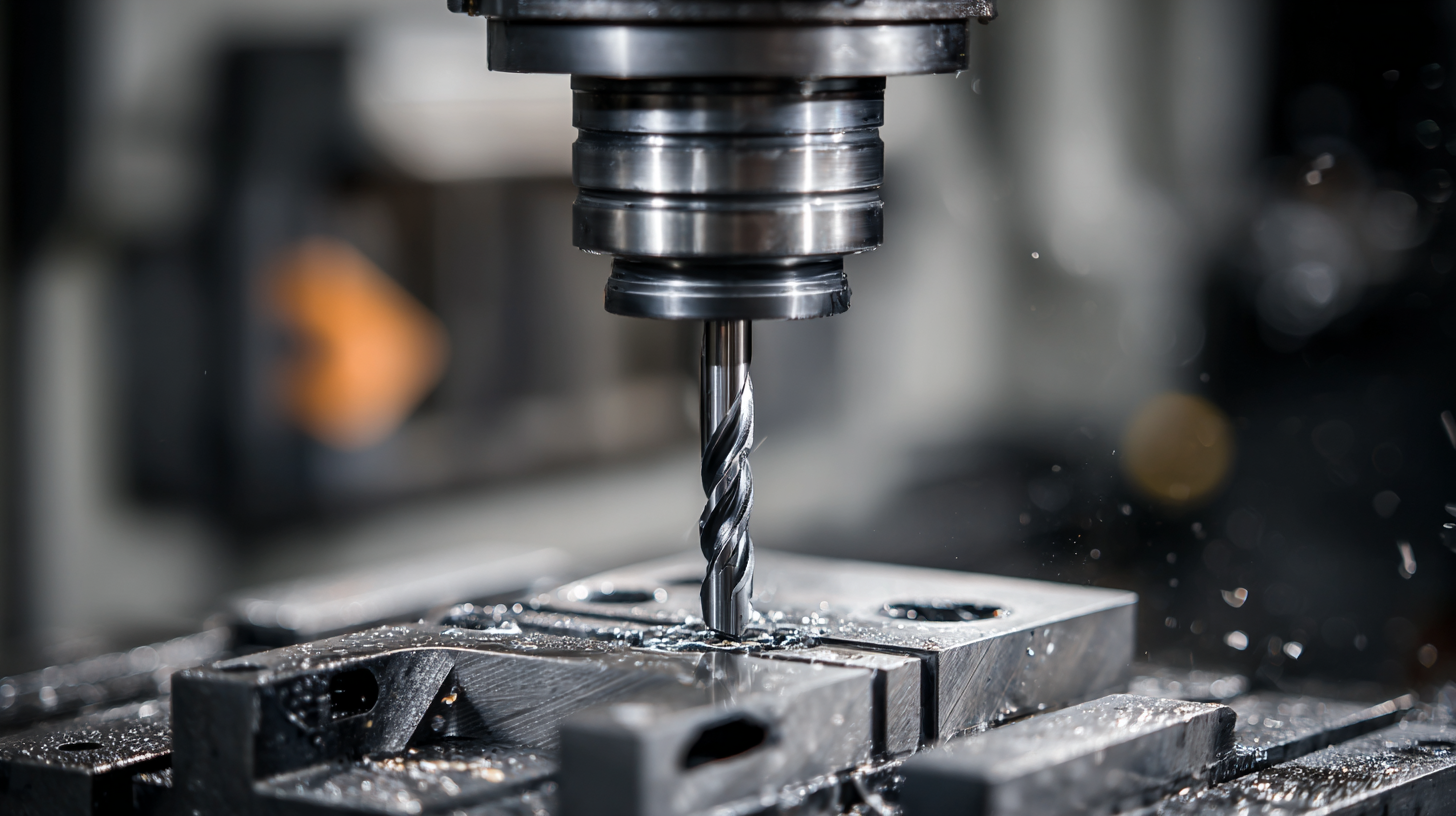
Advanced Coatings: Leveraging Technology to Improve Tool Insert Durability
You know, advanced coatings have really become a game changer in today’s industrial world. They’re crucial when it comes to making carbide tool inserts last longer and perform better. These special coatings, made from cutting-edge materials, give tools that extra bit of resistance to wear and can handle higher temperatures — meaning they can keep up with those intense, high-speed machining jobs. Thanks to this tech, manufacturers can push tools to their limits while also saving money by reducing replacement costs.
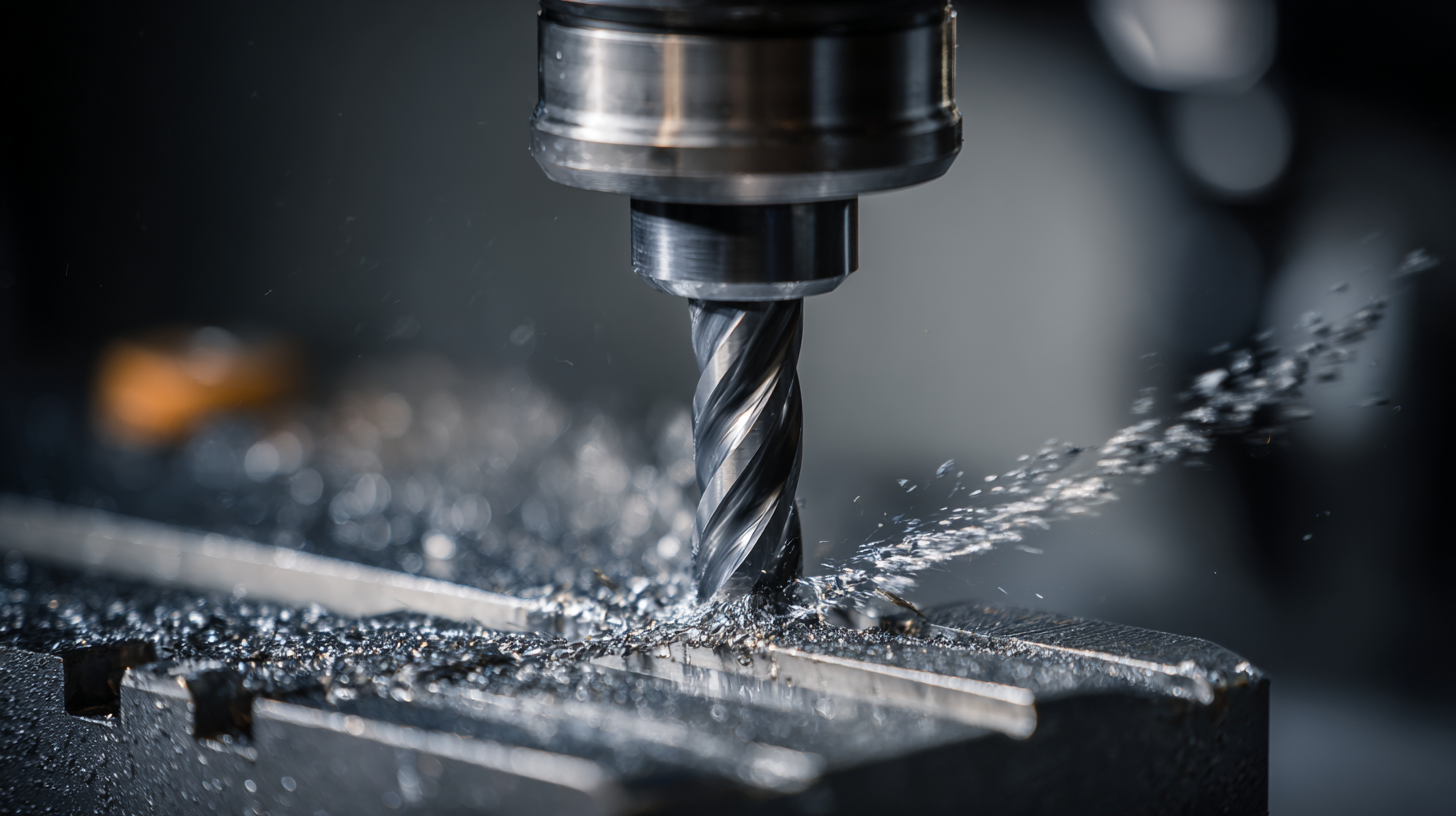
If you're looking to get the most out of your carbide inserts, here are a few tips that might help. First, make sure you pick the right coating for your specific job — not all coatings are created equal, and some work better under certain conditions, like hot environments or when dealing with abrasive materials. Next, pay attention to your cutting parameters — stuff like how fast you’re cutting, the feed rate, and how deep you’re cutting can really impact wear and tear, as well as how often you’ll need to stop. And don’t forget, regularly checking how your tools are performing can really save you headaches — it helps you catch when it’s time to replace or recondition your inserts so your whole operation stays smooth and efficient.
Basically, a little attention and know-how can go a long way in keeping things running smoothly and making your tools last way longer.
Enhancing Machining Efficiency: Insights from Recent Industry Reports on Kennametal's CNMG120412-RP KC9125 Carbide Inserts
In the machining industry, efficiency and tool longevity are paramount for maximizing productivity. Recent reports highlight the impressive performance of Kennametal's CNMG120412-RP KC9125 carbide inserts, underscoring their ability to enhance machining processes, particularly when working with steel, stainless steel, cast iron, and nonferrous products. The original Kennametal brand cutting tools are engineered to deliver consistent wear resistance and prolonged tool life, allowing manufacturers to focus on their production goals without frequent interruptions for tool changes.
The KC9125 inserts are specifically designed for high-speed and high-efficiency cutting, providing stability and security in productive turning operations. This is particularly advantageous in demanding machining scenarios where both speed and precision are critical. With high toughness and low cutting force, these inserts reduce the strain on machinery while delivering superior results, making them an ideal choice for various applications within the ISO and ANSI standards. The combination of these features positions Kennametal’s carbide inserts as a reliable solution for manufacturers seeking to enhance their machining efficiency while maintaining optimal performance levels.
FAQS
: Carbide tool inserts are primarily used in precision machining, offering exceptional hardness and wear resistance that enhance operational efficiency across various industries.
The global market for carbide tools is projected to reach $13.72 billion by 2025, driven by increasing demand for durable and efficient cutting tools.
Key factors include the selection of the proper grade, geometry, and coating, which can significantly impact cutting speed and tool life.
Material selection is crucial because the hardness and wear resistance of carbide materials can lead to productivity increases of up to 30% in machining operations.
Finer-grained carbide inserts are generally more suitable for high-speed applications, while coarser grains are better for roughing operations.
The right rake angle can reduce cutting forces and improve chip evacuation, enhancing tool life and surface finish.
Advanced coatings enhance the durability and performance of carbide tool inserts by providing superior wear resistance and improved thermal stability.
By selecting the appropriate coating for the specific insert application, maintaining optimal cutting parameters, and regularly monitoring tool performance.
A well-chosen PVD coating can reduce friction, enhance tool performance, and lead to longer intervals between tool changes.
It's essential to match the carbide grade to the specific material being machined to significantly impact cutting efficiency.
Conclusion
In the world of CNC machining, making the most out of carbide tool inserts is pretty much essential if you want to boost productivity and cut costs. Getting a good handle on the key features of these inserts helps manufacturers pick the right ones for their specific jobs. Things like tool shape and angles really matter—they can make a big difference in how smoothly and efficiently cutting goes. And choosing the right material? That’s a must if you want your tools to hold up against different kinds of projects.
On top of that, fine-tuning cutting parameters like speed and feed rates can really ramp up your output and performance. Don’t forget, regular maintenance is key—taking care of your tools helps them last longer and keeps quality consistent. Plus, modern coatings are a game-changer—they add durability and give you that extra edge over competitors. Here at Jinan Terry CNC Tool Limited, we’ve got a wide range of top-notch CNC cutting tools designed to help you improve your processes and stay ahead of the game.
Blog Tags:

Lila
-

Phone
-

E-mail
-

Skype

